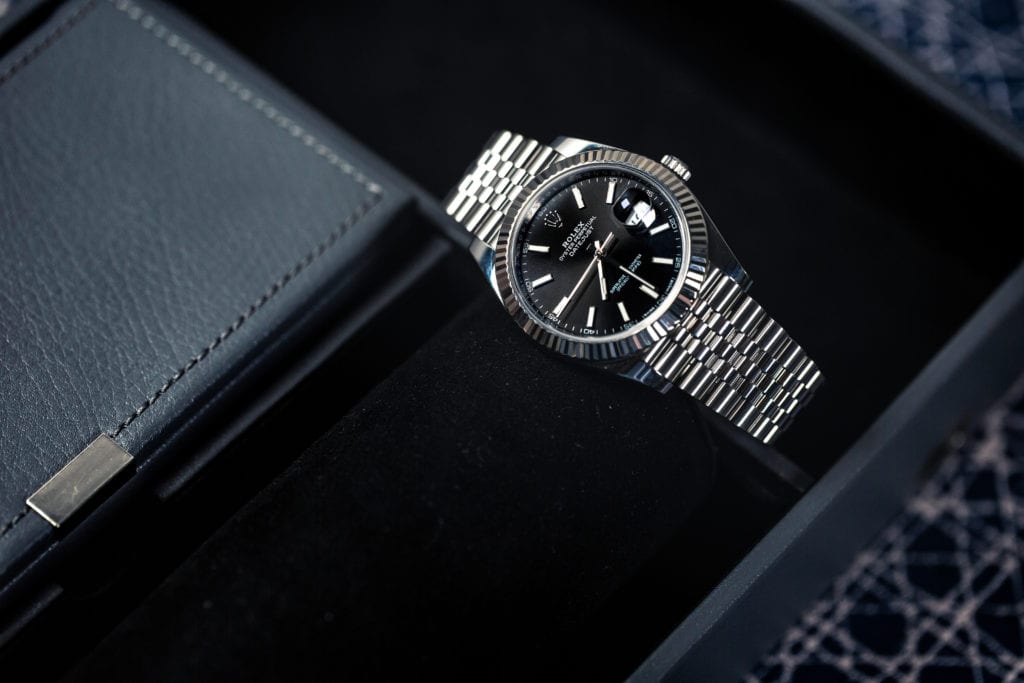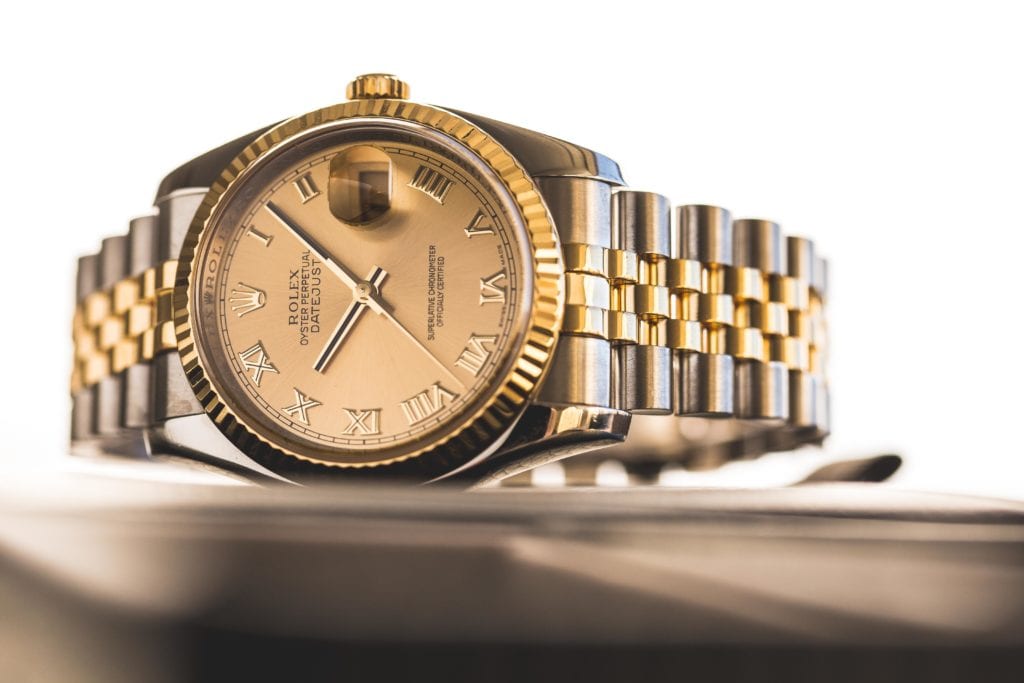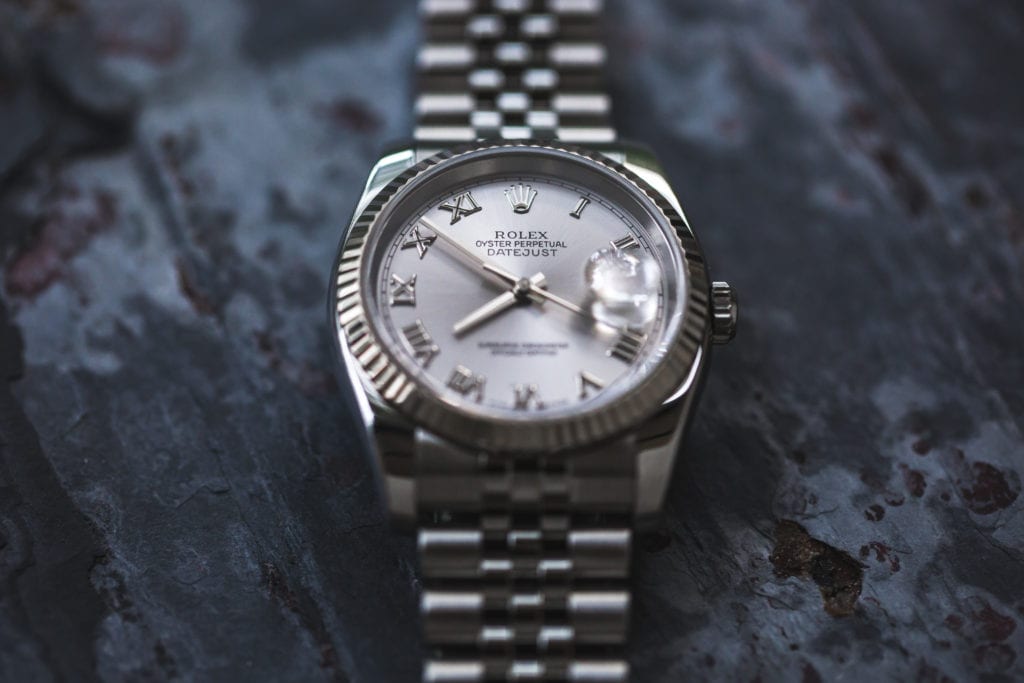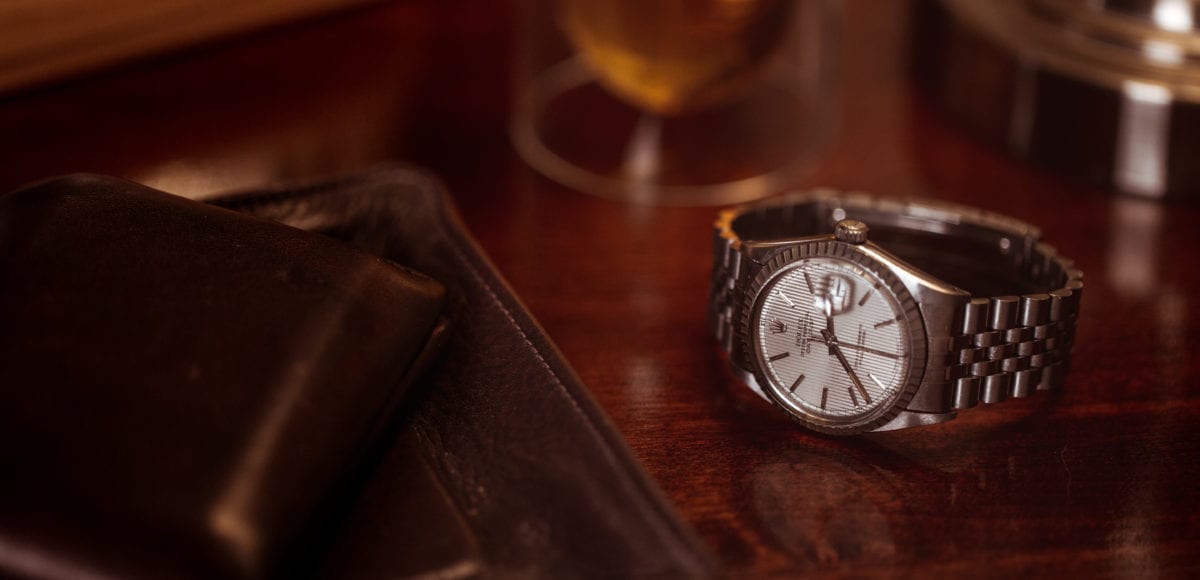Getting Deeper with the Datejust
The Rolex Datejust is an icon within the watch industry. The brand first debuted the watch in 1945 in celebration of their 40th anniversary. The revolutionary model was the first automatic wristwatch to feature a date complication. For over 70 years, the Datejust has been a staple in the Rolex lineup. In that time, the brand has introduced many references and dozens of iterations. Here, we’ve broken down two of the key characteristics of the model and created a guide to different variations of the Datejust.
Size
The original model was the Jubilee Datejust, Reference 4467. Its name comes from the distinctive Jubilee bracelet, which has since become a trademark style for the Rolex brand. This initial reference featured a modest 36mm case and is still in production today. The Datejust’s case design saw some modifications over the years, but, for the most part, it retained its original proportions. However, by 2009, the demand had increased for a larger, more contemporary variation of the model. Rolex answered the call with the release of the 41mm Datejust II. In addition to the heftier case size, the Datejust II boasted thicker indices, bigger hands, and a wider bezel.

The updates not only gave the model a more modern appeal but also gave it a sportier look and feel. Just a few years later in 2016, Rolex changed up the Datejust line once again. They discontinued the Datejust II and replaced it with the Datejust 41. The new model came equipped with an all-new movement and a completely redesigned case. The Datejust 41 maintains the bulkier case size of the Datejust II. However, its proportions are more similar to the original Datejust.
Design
With any watch model, there are four main design aspects: the material, bezel, dial, and bracelet. The Datejust is available in three different metal options. There’s the original solid 18-karat gold version. The Ref. 4467 was only available in this precious metal, and it wasn’t until 1957 that Rolex introduced a stainless steel iteration. Today, Rolex continues to offer the Datejust in stainless steel as well as two-tone stainless steel and yellow gold.

Over the years, there have been four different bezel options for the Datejust. The model is currently available with a smooth or gem-set bezel. In addition, there’s the option for a fluted bezel in the 18-karat gold variation. Previously, Rolex offered an engine turned bezel for the Datejust. However, the brand discontinued this style in the early 2000s. There are just two bracelet choices for the Datejust: the original, dressier Jubilee bracelet and the sportier Oyster bracelet.
Last but not least is the dial. The Datejust is available with countless colors, types of hour markers, and materials to fit any style. Overall, the dial combination can have the greatest impact on the look and feel of the watch. For instance, a model with a darker dial and stick indices will appear smaller and have a more conservative style. On the other hand, a model with a white dial and Roman numeral markers will have a bolder, more noticeable presence. In addition to these style choices, there’s the more functional option for luminescence on the indices and hands.
Choosing the Best Model for You

The Datejust is one of the most popular and versatile models in the Rolex catalog. The number of references, style, and practical options can be overwhelming. However, having this wide array of choices can also allow you to select a model that perfectly fits your lifestyle and personal aesthetic. We hope this breakdown of the key characteristics and guide to different variations helps you make a more informed decision before buying a Rolex Datejust.
Get More Articles Like This in Your Inbox
We're constantly creating great content like this. So, why not get it delivered directly to your inbox? By subscribing you agree to our Privacy Policy but you can unsubscribe at any time.






